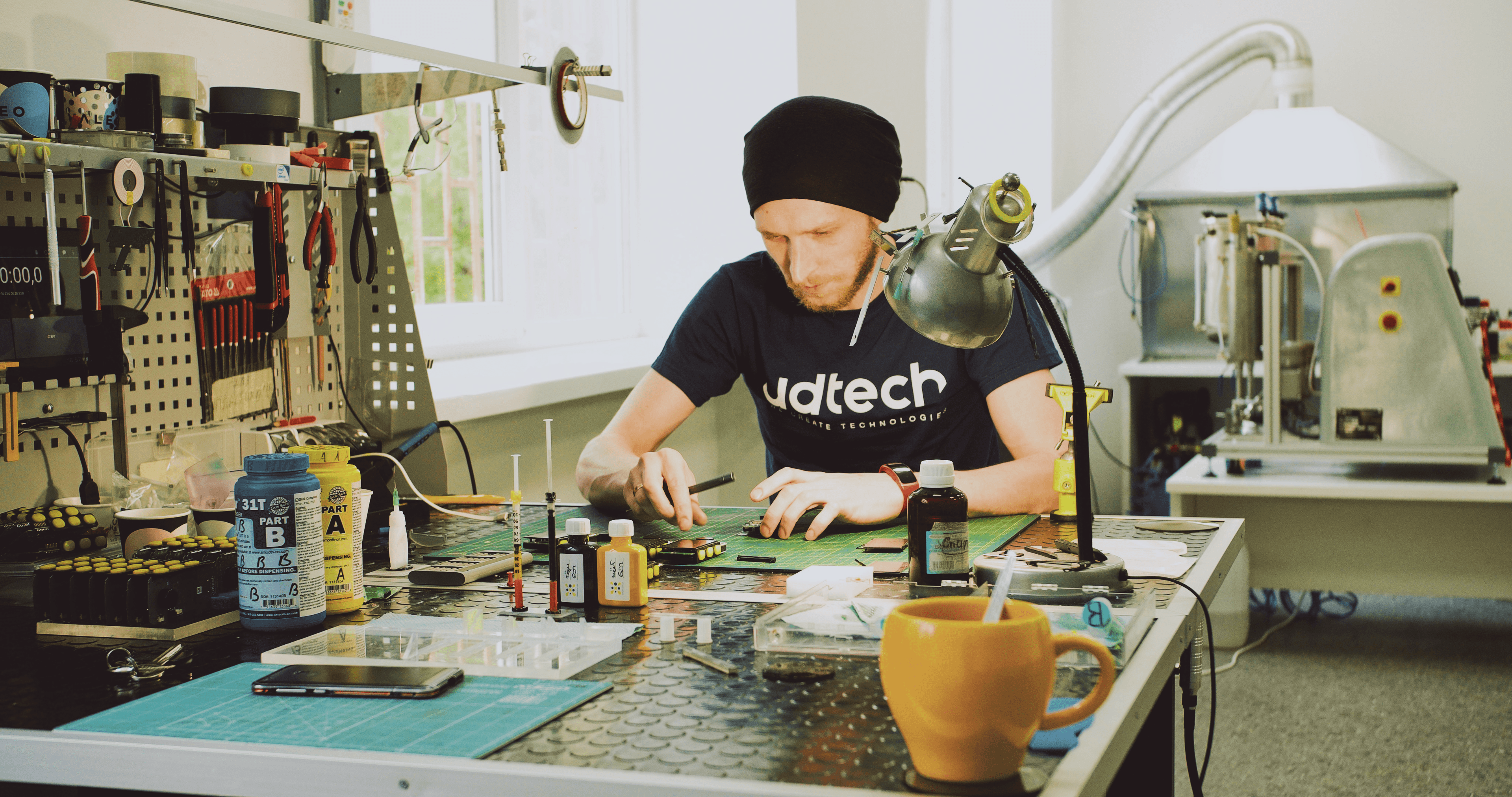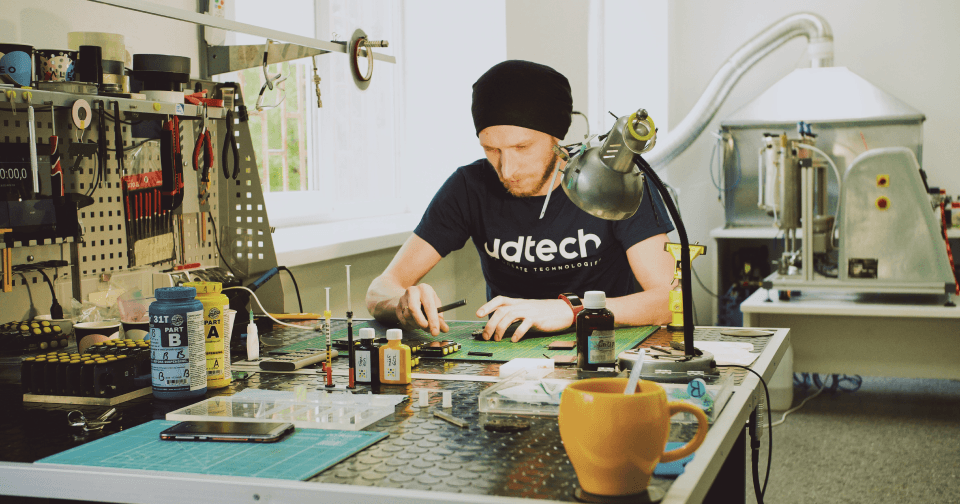

Industrial Design for Sustainable Development.
Industrial Design for Sustainable Development.
Industrial design plays a significant role in shaping the products and systems we interact with daily. As the world increasingly focuses on sustainability and environmental consciousness, industrial design has a crucial role to play in promoting sustainable development. In this article, we will explore the intersection of industrial design and sustainable development, highlighting how it can contribute to a greener and more sustainable future. To see examples of projects where product development was performed from scratch, visit https://udtech.co/cases.
Industrial design plays a significant role in shaping the products and systems we interact with daily. As the world increasingly focuses on sustainability and environmental consciousness, industrial design has a crucial role to play in promoting sustainable development. In this article, we will explore the intersection of industrial design and sustainable development, highlighting how it can contribute to a greener and more sustainable future. To see examples of projects where product development was performed from scratch, visit https://udtech.co/cases.
Understanding Industrial Design: Industrial design is a discipline that combines creativity, aesthetics, and functionality to develop products and systems that meet user needs. It involves the process of conceptualizing, designing, and refining products, considering factors such as usability, ergonomics, materials, and manufacturing processes. Industrial designers strive to create products that are visually appealing, user-friendly, and sustainable.
Understanding Industrial Design: Industrial design is a discipline that combines creativity, aesthetics, and functionality to develop products and systems that meet user needs. It involves the process of conceptualizing, designing, and refining products, considering factors such as usability, ergonomics, materials, and manufacturing processes. Industrial designers strive to create products that are visually appealing, user-friendly, and sustainable.
Industrial Design and Sustainable Development: Sustainable development aims to meet the needs of the present without compromising the ability of future generations to meet their own needs. Industrial design can contribute to sustainable development in various ways:
Industrial Design and Sustainable Development: Sustainable development aims to meet the needs of the present without compromising the ability of future generations to meet their own needs. Industrial design can contribute to sustainable development in various ways:
1. Material Selection and Lifecycle Analysis: Industrial designers can make sustainable choices by selecting materials with low environmental impact. They can assess the entire lifecycle of a product, from raw material extraction to disposal, and consider factors such as recyclability, durability, and energy consumption. By choosing sustainable materials and designing products for longevity, industrial designers can reduce waste and minimize the environmental footprint.
1. Material Selection and Lifecycle Analysis: Industrial designers can make sustainable choices by selecting materials with low environmental impact. They can assess the entire lifecycle of a product, from raw material extraction to disposal, and consider factors such as recyclability, durability, and energy consumption. By choosing sustainable materials and designing products for longevity, industrial designers can reduce waste and minimize the environmental footprint.
2. Energy Efficiency and Renewable Energy Integration: Industrial designers can play a crucial role in promoting energy efficiency and integrating renewable energy sources into product designs. By optimizing energy consumption, reducing standby power, and incorporating energy-saving features, products can operate more efficiently and reduce their impact on the environment. Industrial designers can also explore ways to harness renewable energy, such as solar or wind power, to power products and systems.
2. Energy Efficiency and Renewable Energy Integration: Industrial designers can play a crucial role in promoting energy efficiency and integrating renewable energy sources into product designs. By optimizing energy consumption, reducing standby power, and incorporating energy-saving features, products can operate more efficiently and reduce their impact on the environment. Industrial designers can also explore ways to harness renewable energy, such as solar or wind power, to power products and systems.
3. Design for Disassembly and Recycling: Industrial designers can incorporate principles of Design for Disassembly (DfD) and Design for Recycling (DfR) into their designs. By considering how products can be easily disassembled and components recycled, designers can contribute to the circular economy and reduce waste. Designing for disassembly and recycling ensures that valuable materials can be recovered, reducing the need for raw material extraction and minimizing environmental degradation.
3. Design for Disassembly and Recycling: Industrial designers can incorporate principles of Design for Disassembly (DfD) and Design for Recycling (DfR) into their designs. By considering how products can be easily disassembled and components recycled, designers can contribute to the circular economy and reduce waste. Designing for disassembly and recycling ensures that valuable materials can be recovered, reducing the need for raw material extraction and minimizing environmental degradation.
4. User-Centric Design and Behavior Change: Industrial designers have the power to influence user behavior through thoughtful design. By creating products that encourage sustainable practices, such as energy conservation, waste reduction, or responsible consumption, designers can drive behavior change and promote sustainable lifestyles. User-centric design focuses on understanding user needs and designing products that align with their values and behaviors.
4. User-Centric Design and Behavior Change: Industrial designers have the power to influence user behavior through thoughtful design. By creating products that encourage sustainable practices, such as energy conservation, waste reduction, or responsible consumption, designers can drive behavior change and promote sustainable lifestyles. User-centric design focuses on understanding user needs and designing products that align with their values and behaviors.
UDTECH and Industrial Design: UDTECH, a leading provider of engineering services, recognizes the importance of industrial design in promoting sustainable development. We specialize in product development and engineering services that prioritize sustainability and environmental consciousness. Through our projects, we showcase the integration of industrial design principles with sustainable practices. To explore examples of projects where product development was performed from scratch, visit https://udtech.co/cases. Witness how UDTECH incorporates industrial design in our sustainable development initiatives.
UDTECH and Industrial Design: UDTECH, a leading provider of engineering services, recognizes the importance of industrial design in promoting sustainable development. We specialize in product development and engineering services that prioritize sustainability and environmental consciousness. Through our projects, we showcase the integration of industrial design principles with sustainable practices. To explore examples of projects where product development was performed from scratch, visit https://udtech.co/cases. Witness how UDTECH incorporates industrial design in our sustainable development initiatives.
Conclusion: Industrial design plays a crucial role in driving sustainable development. By considering factors such as material selection, energy efficiency, design for disassembly, and user behavior, industrial designers can contribute to a greener and more sustainable future. UDTECH exemplifies the significance of industrial design in sustainable development through our engineering services. To witness the impact of industrial design in real-world projects, visit https://udtech.co/cases. Embrace the potential of industrial design in shaping a more sustainable world and explore the possibilities of sustainable product development.
Conclusion: Industrial design plays a crucial role in driving sustainable development. By considering factors such as material selection, energy efficiency, design for disassembly, and user behavior, industrial designers can contribute to a greener and more sustainable future. UDTECH exemplifies the significance of industrial design in sustainable development through our engineering services. To witness the impact of industrial design in real-world projects, visit https://udtech.co/cases. Embrace the potential of industrial design in shaping a more sustainable world and explore the possibilities of sustainable product development.